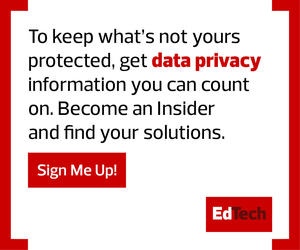MCS paired the RFID cards with a contact tracing and hygiene verification solution. Combined with driver seating charts, the district can now trace contacts. “If we have a student test positive, we go back and refer to the seating chart and then we pull that scanned list and it lets us know all the students that would have been affected,” says Ellis.
Drivers were trained first with the RFID cards, scanning themselves on and off of buses. The cards were then made available to students, attached to backpacks or lanyards. Adoption was quick. “By the end of the second week, we were pretty much requiring the students have the card in order to ride the bus,” Ellis says. “We can’t imagine life without them anymore.”
Once the system was adopted, Marietta decided it could do more with the cards. The RIFD cards are now used for lunch payment, checking out library books or laptops, and can even be used for discounts at local vendors. “We didn’t want to just make it a transportation solution,” Ellis says.
MORE ON EDTECH: What will post-pandemic classrooms look like and how will they be different?
Bus Routing Becomes Safer and More Efficient
Ensuring that the bus ride between home and school is the safest it can be is paramount for schools. For Melissa Independent School District in Texas, this means using bus routing and transportation management software on tablets installed in each bus. This software offers turn-by-turn GPS directions and provides stop information for each student on board.
It’s enabled contact tracing and has also made routes more efficient and easily modifiable. The software can be used to make short- or long-term changes to accommodate anything from traffic accidents to ongoing construction. It can also be manually adjusted to factor in student safety. “We’re able to move different routes and modify them on our own,” says Jerad Castor, Melissa ISD’s director of transportation. “Sometimes, for example, we want to make sure that it’s a right-side pickup, so that the students are getting on without having to cross the street.”
Parental peace of mind is also achieved with the Traversa Ride 360 app. Similar to Uber, the app shows where a bus is and can notify parents when their children swipe on or off the bus. It also makes altered routes easier to broadcast. “It’s inevitable that our times will change the more students we add to a route,” says Castor. A mass notification can be sent through the app telling parents to check new route information.
EXPLORE: Cisco provides a seamless wireless connection anywhere.
Blockchain Technology Makes Applying to Colleges Easier
Blockchain technology — which encrypts and groups secure information into digital blocks that can only be linked together again after two-party validation — might not seem like an organic fit for academic institutions. However, Dallas Independent School District has been using the technology in an innovative way to empower students’ ownership of their academic journeys.
With blockchain technology, all of students’ academic records — transcripts, recommendation letters, certifications and more — are given to them to send out how, where and when they want. It’s created a dramatic change to the college application process. “The days of printing out a transcript and physically mailing it off to a university, that’s in the past,” says Marlon Harrison, Dallas ISD’s director of student applications.
KEEP READING: How do high school students feel about college after the pandemic?
Since the district piloted the initiative with seniors in 2020 and expanded it to juniors in 2021, there’s been positive feedback about easier and faster registration and admissions processes. This technology allows students to search potential schools and send their records without waiting, mailing or worrying about anything getting lost. It’s all in their control and extremely secure.
Harrison does stress that schools looking to follow Dallas ISD’s lead should have XML technology. Those considering blockchain need the ability to produce XML versions of their students’ data and records. For Dallas ISD, the process was worth it. “We’re always looking to not stay stagnant, to keep pushing and be innovative for our students so that they’re up to date and equipped with everything they need to be successful,” says Harrison.
This is something Dallas ISD shares with every other school pioneering new technologies: They are all investing in the tools to make students’ and educators’ lives better.










